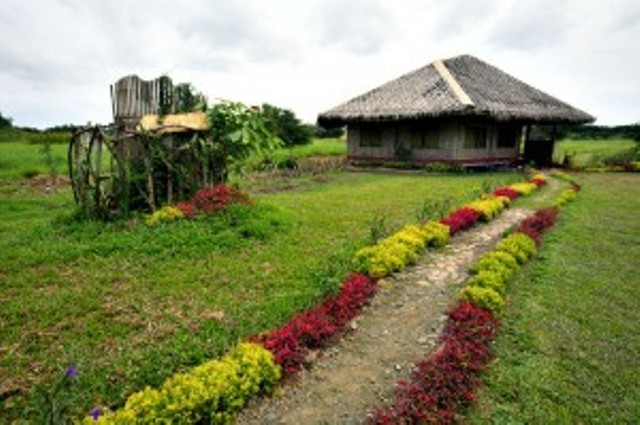Single News
Haiyan – the monster storm
After the storm, the flood. Since typhoon Haiyan struck the Philippines and other parts of the south-east Asia last month, followed by severe flooding, emergency aid has been pouring into the country. The latest official figures released by the Philippines government are hard to comprehend: more than 5,982 dead with the count still rising, 27,022 injured and 1,779 people still missing. Almost 600,000 houses partly or wholly destroyed. According to the UN children’s organisation UNICEF, between nine and 13 million people are estimated to have been affected by typhoon Haiyan, including five million children. NNA correspondent Walter Siegfried Hahn lives in the Philippines and describes his expericence of the storm.
PALAWAN, Philippines (NNA) – The great storm had been announced several days in advance. We thought ourselves protected as we live a good 200 km outside its track. On Friday afternoon we saw the first YouTube videos from Tacloban and gaped. On the other hand, pictures of coconunt palms bending in a gale were not totally unfamiliar. At the same time the pictures on the weather maps showed that the eye of the storm had passed. We emailed everyone: we’ve survived.
Then it began to rain. The Internet went down, the telphone network collapsed, finally the electricity failed. The night was very dark and nothing could be heard except the sound of water masses thundering down. It was like being on the ocean in a nutshell. The next morning we could see nothing but water. We had been invited to lunch and succeeded with rubber boots to make our way through the floodwaters. Once again we though it was all over until we were driven off the veranda by the breaking storm which swept the rain horizontally into the house. It continued to rain until, late at night, we finally fell into an exhausted sleep.
Next morning the sun shone in a clear blue sky over Palawan and romantically illuminated the newly created lakes in which some houses had been completely submerged while others looked out across the water as if such an aqueous landscape had always existed. It was the worst flood which anyone born there could remember. The telephones were reconnected after two days, the Internet a week later. As communication was restored, the scale of the disaster became clear. If at the beginning information still came from Europe and America, we now began to receive increasing numbers of reports from friends who had been closer to the eye of the storm and we managed to contact people whom it had not been possible to reach before. The closer they were to the event, the less the were able to say, the more shocked they were.
Events in the Philippines had begun to escalate towards the end of the year. There was the so-called pork barrel scam, a corruption scandal of incredible dimensions, in which many politicians are said to be implicated. Then the siege and hostage taking of several villages in Zamboanga by Islamist insurgents which threw thousands of people and a whole region into panic. In mid-October there came the 7.2 earthquake on Bohol and Cebu and the aftershocks which lasted for weeks, often at only minute-long intervals, depriving hundreds of thousands of people of the familiar feeling of standing on secure ground. Finally, there was Haiyan itself which swept across many of the same parts of the country, having wreaked unimaginable destruction on the islands of Leyte and Samar before ravaging areas further west in Panay and the north of Palawan.
A survey of anthroposophical institutions revealed that most of them had survived without too much damage. The Gamotcogon school, which is prone to flooding because Panay lies so close to sea level, was subject to massive flooding which meant a huge clean-up operation; many things will have to be replaced. But there was great gratitude at having survived the storm in view of the news from elsewhere. Incidentally, other facilities and municipalities reacted in a similar way, such as the island of Coron in northern Palawan. Here 80 percent of tourism facilities were destroyed but the mayor noted after a meeting with the island’s business people and politicians that they would be able to repair the damage by their own effort and take control of reconstruction themselves.
Hardly was our telephone working again when the request from the international Waldorf organisation Friends of Waldorf Education came. Of course we would be willing to help coordinate a deployment of their emergency education team; after all, such a training had been planned two years ago in a country which is used to emergencies. At the same time such initiatives had already started particularly among our younger anthroposophical friends. As early as a week after the typhoon, art therapy work started with children in Bohol led by the dentist and Waldorf teacher Malou Medrano with the involvement of nurses, teachers and therapists. The adult education teacher Francelline Jimenez and the priest Thor Malangit also planed events there, focused more on sport but with the same kind of spiritual foundation.
The people of the Philippines like to present themselves as being able to cope with every crisis with a smile. People like to say how everything passes and react somehow. Perhaps it was the elemental power of Haiyan (called “Yolanda” in the Philippines) which for the first time made the laughter stick in many people’s throat. Perhaps this moment can help us to recognise that a reactive attitude is not enough. Perhaps we will have to learn, as with hurricane Katrina, that the assessments of what was coming were wrong. We will have to brace ourselves that things can get much worse than hitherto, that the water can rise higher, that the wind can blow more powerfully than before. Perhaps we will have to change from a reactive to a proactive attitude to life. From somehow muddling through to consciously doing what is necessary.
END/nna/wsh/cva
Item: 131212-01EN Date: 12 December 2013
Copyright 2013 News Network Anthroposophy Limited. All rights reserved.

